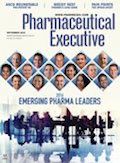Pharm Exec's Emerging Pharma Leaders 2016
Pharmaceutical Executive
Pharm Exec’s 9th annual list of rising industry leaders illustrates how the deployment of essential human capital has changed in line with a business model that is no longer static and predictable-or complacent.
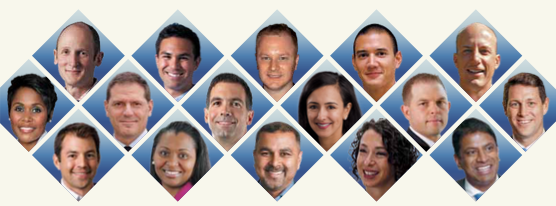
Now in its ninth year, Pharm Exec’s Emerging Pharma Leaders (EPL)-16 for 2016-is our ongoing tableau of an industry on the move. Selected in an open, non-sponsored process with the active participation of the magazine’s Editorial Advisory Board, this year’s EPL roster demonstrates how the industry’s deployment of essential human capital has changed in line with a business model that is no longer static and predictable-or should we say complacent?
Instead, the industry requires talent that can function effectively in a climate of contradictions. One where competitive threats emerge suddenly, from all directions, while opportunities are short-lived and hence can easily be missed. This requires in turn a flexible business culture able to generate more market-disrupting ideas and to execute swiftly toward a successful end-game whose ground rules are starkly clear. All our 2016 leaders agree that success means a global market orientation; differentiated, dominant brands, sustainable through the entire product life cycle; superior, leading-edge technologies that yield not just data, but answers; and a strong value proposition to customers. These are the EPLs’ marching orders. And forget about that annual performance review as the benchmark for reward-what matters to these leaders is constant daily feedback, the gift of authenticity in real time.
- William Looney, Editor-in-Chief
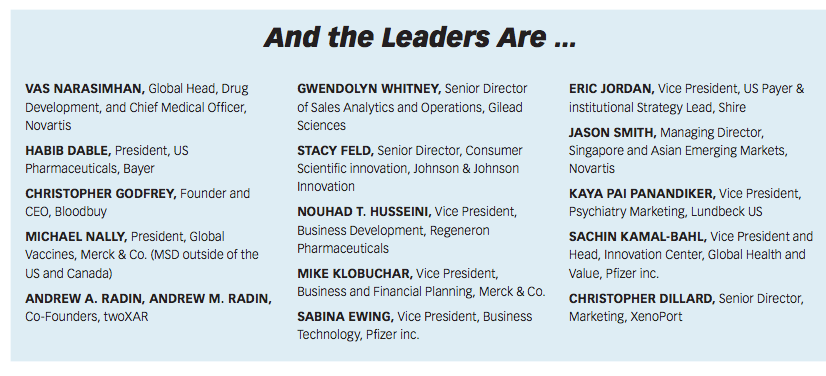
Driving ‘Incredible Science’
Vas Narasimhan, Global Head, Drug Development, and Chief Medical Officer, Novartis
Vas Narasimhan’s pharma journey did not start with a game plan other than wanting to achieve “the biggest possible impact on public health.” He went to Harvard Medical School, and then onto Harvard’s Kennedy School of Government, with the goal of becoming a public health physician.

After graduating, he worked extensively in Africa, Peru, and India on projects focused on HIV/AIDS, tuberculosis (TB) and malaria. After taking in the experience of on-the-ground medical systems in the developing world, he eventually decided he wanted to expand his knowledge of management; he felt that “what was lacking in the public health community was the ability to lead and manage complex global organizations.” So he went to work as a consultant and engagement manager at McKinsey & Co. for two years, learning a lot about the industry and, crucially, how to lead.
“When I was working in Peru on a TB program, running a project with the Ministry of Health, I saw how difficult it is to get the various stakeholders from around the country together and align around a common goal,” he says. “I remember thinking how little you actually know when you have to make complex decisions-but people are still looking for you to lead. McKinsey taught me that, how to make decisions with limited information.”
In 2005 Narasimhan joined Novartis, working primarily on pipeline development, and in 2007 became global head of its meningitis franchise. By 2009, as head of US Vaccines, he was leading the whole of the Novartis operation’s pandemic H1N1 response, an experience that gave him “a lot of confidence in my ability to get people behind a common purpose.” He had to galvanize the global organization to develop four different vaccines and produce hundreds of millions of doses in a short amount of time. “I had to keep people moving toward a goal that they didn’t think was possible,” he says, “and also take care of the external environment, where, for example, you’re testifying in front of Congress and trying to manage a huge range of stakeholders.”
Spending the best part of a decade building Novartis’s vaccine development pipeline also had its humbling moments. “You get so passionate about what you’re doing that you desperately want it to succeed,” says Narasimhan. “We did everything we could to build and grow that business, but in the end we had to understand that there was a better owner for it and we sold it to GSK.”
But Narasimhan looks back on this turn of events philosophically, as another valuable experience. “Sometimes it’s important to take a step back and realize that, even if it feels like a personal setback for you, it’s the best thing for that enterprise to go in a different direction. It took time to be comfortable with it, but in the end it was the right decision.”
Narasimhan’s career trajectory, nevertheless, continued apace. Now, as global head of drug development and chief medical officer at Novartis, he leads more than a 10,000-person staff spanning over 140 programs. For him, overseeing such a large number of people comes back to those common goals. “In a large organization, you’re only as good as your immediate team-and the team around that immediate team- because they’re the ones that have to take those objectives forward,” he says. “It’s about driving a culture of openness and collaboration. I spend a lot of time on the selection of the top 200 people; if you can drive that culture through your top leadership, that will really help shape how the organization operates.”
Narasimhan is as passionate about the managerial aspect of his role as he is working on “the incredible science.” He says that “every day there is a stream of problems that you have to tap into your brain to really think about solving. A few years ago I would have said, just focus on the objectives and on driving results. Much more now I realize it’s the time I spend with people and the power of inspiring them. And you have to be genuinely curious and treat every meeting and every conversation as an opportunity to learn.”
That Narasimhan is earmarked for even greater things was confirmed by his inclusion in Fortune’s “40 Under 40” annual ranking last year of “the most influential young people in business,” sharing the platform with the illustrious likes of innovators and disruptors such as Bank of America managing director Karen Fang, Hillary Clinton’s campaign manager Robby Mook, and a young singer-songwriter named Taylor Swift. But in the midst of such accolades, he has kept his feet on the ground and his mind on the job. “I’ve trained myself to really just focus on the day, the week, the month,” says Narasimhan. “In the last three years I went from head of vaccines R&D to now heading up drug development and being the chief medical officer across all of Novartis. I wouldn’t have scripted it, and that makes me reticent about over-engineering my career.”
- Julian Upton
The Feedback Gift
Habib Dable, President, US Pharmaceuticals, Bayer
Long associated with that very earliest staple of the medicine chest-aspirin-Bayer is today a company with a commitment to shortening the horizon line for drug innovations of the future. Leading that repositioning in the US-Bayer’s

largest market-is Habib Dable, 45, a 22-year company veteran and the man behind the launch of some of the industry’s most iconic brands, including the ophthalmology blockbuster, Eylea. The following are thoughts from one of this year’s Emerging Pharma Leaders on motivating colleagues, managing culture change and navigating from the top to secure what he contends is a bright future for medicines innovation.
PE: Is there a story or anecdote that helped shape and define who you are today?
Pursuing what I was truly passionate about was the key to shaping who I am today. At the University of New Brunswick (UNB) in Canada, I started as a student in the science program, but I quickly realized that was not the program for me. I was intrigued by science, but I discovered that I did not want to be a physician. Rather, I moved toward business, perhaps as a CEO someday. I transferred to the business program, worked as hard as I could, took extra courses, and enrolled in summer classes so I would graduate on time. I then got an MBA, also from UNB. Ironically, my first job out of business school was with a company called Bayer, focused on Science for a Better Life. I’m still as passionate about the business today as I was then. Gathering feedback from those you trust is important, but nothing can replace your gut instincts.
PE: What are the most critical assets and skills from your background that you must draw on in managing people, defining strategy, and executing objectives?
I learned, early on, the importance of interpersonal awareness to excel at networking and building strong stakeholder relationships. This really allows you to have the data and perspective necessary to manage and set a strategic course. And related to this, I’m an active listener. In making decisions, I seek out people with different perspectives as a way to test my own judgment and avoid complacency. Complacency is a trait that has to be systematically addressed and rooted out, particularly in large organizations.
In that regard, one of the things that has kept me at Bayer for 22 years-it’s actually the only place I have worked-is its strong support for professional growth. Our performance management program strives to activate employees’ motivation by aligning their individual objectives and behaviors with the company’s strategy and “LIFE” values-that is -Leadership, Integrity, Flexibility, and Efficiency. This serves to increase our employees’ sense of belonging and loyalty to the company. I’ve seen it in action, and it works.
PE: How important are cross-disciplinary teams in driving the agenda of biopharma companies today?What makes a good team work and what factors tend to make a team less successful?
Cross disciplinary teams are critical to our business success at Bayer. Perhaps this wasn’t always the case but the marketplace is increasingly complex and constantly evolving. There are multiple stakeholders with different needs, and effective teams drive for results, collaborate, value different points of view, and hold themselves accountable. When these elements are missing, teams can become sources of conflict.
PE: Where is the industry going? Based on that, what are the three most important management skills and leadership characteristics that you believe are going to be most relevant to achieving career success in the future?
It’s a great time to be working in biopharma. US healthcare venture investments hit an all-time high in 2015 and FDA approved more new drugs-45-in decades. The industry is now open to looking at new ideas-creativity is critical, given the regulatory and financial challenges companies face today. The key is to understand the unmet medical needs of patients. Knowledge of biochemical processes and underlying genetic causes of diseases is growing at record speed, and R&D requires a degree of specialization that a single organization can no longer achieve on its own. We, like others in the industry, recognize that cultivating ideas also includes looking for innovation outside of Bayer.
Given that, I see the most relevant leadership characteristics for the future are applying knowledge of the business and marketplace to the organization’s goals; seeing ahead for future possibilities to develop breakthrough strategies; building strong teams that apply diverse skills and perspectives to achieve common goals; and stepping up to address difficult issues and saying what needs to be said.
PE: Human capital is critical to a knowledge-based industry like biopharma. Do you ascribe to the notion that changing the mindset of a workforce is an exercise that must begin and be supervised from the very top? Is the CEO the one who sets the culture of a company or is the concept of “culture” more linked to a legacy drawn from the contributions of many individual leaders over time? If it’s the latter, how do you change the culture?
Whether it’s changing a mindset or addressing a corporate culture, employees look to leadership to set the tone. So it starts at the top-not only with the CEO but also among the leadership across the organization. Culture is a lot bigger than any one individual or team, though. It’s really the essence of an organization’s personality, and it starts with values, goals, and character. And it is built on the contributions of many. To change a culture would require a multidimensional effort that is grounded in clarity of purpose and that engages people inside and outside the organization in meaningful ways.
PE:The biopharma industry faces reputational challenges as well as the opportunity loss from a one-third decline in the US industry’s employment base over the past 15 years. What is needed to keep colleagues motivated in light of these adversities?
We need to do a better job of communicating our story as an industry. Many people don’t understand that it takes well north of $1 billion to develop a drug and bring it to market. Nor do they connect that with the tremendous risk we take along the way to plan for our production and distribution. Approximately 90% of biotech clinical research goes toward projects that ultimately fail. Even in the midst of such odds, this past decade has seen the industry successfully lessen the impact of serious diseases-HIV, cancer, hepatitis C, rare diseases, among others.
Such innovation is key to our value proposition and to keeping our people motivated. The impact we have on patients carries a profound influence on the people that work in our industry. I’ve seen it time and time again. At a more micro level, setting clear expectations and holding people accountable are vital so that people have a line of sight into what they’re doing and what they need to do to be successful. This will instill trust and foster collaboration-which are essential elements of a successful and motivated employee base.
PE: Is it inevitable that, as organizations grow larger, there is a regression toward a standard of “chronically average” in evaluating employee performance. What is your view of the trend among many leading multinationals like GE to scrap a formalized annual employee review system?
Performance management is always a hot topic and one that gets a great deal of attention. During my years at Bayer, I have seen several different systems-both as a “reviewee” and a reviewer.
The bottom-line is that we owe employees feedback, and it must be transparent and honest. Personally, I try to provide feedback every day, and thus the system becomes less important than the content of that exchange. Feedback is a gift, good or bad, and we should treat it as such and ensure our employees are clear on where they stand.
- William Looney
Going Down the Rabbit Hole
Christopher Godfrey, Founder and CEO, Bloodbuy
Sometimes a change in the weather can be life-changing. So it was for Chris Godfrey, a Dallas-based investment professional whose new start-up is attracting plaudits-and investment-grade partners-for addressing a persistent gap in the US medical supply chain. His company, Bloodbuy, is using innovative data management technologies to create a transparent and consistent process for exchanging price and supply information around the core commodity of healthcare: blood. And, like most entrepreneurs, Godfrey scoffs at the notion
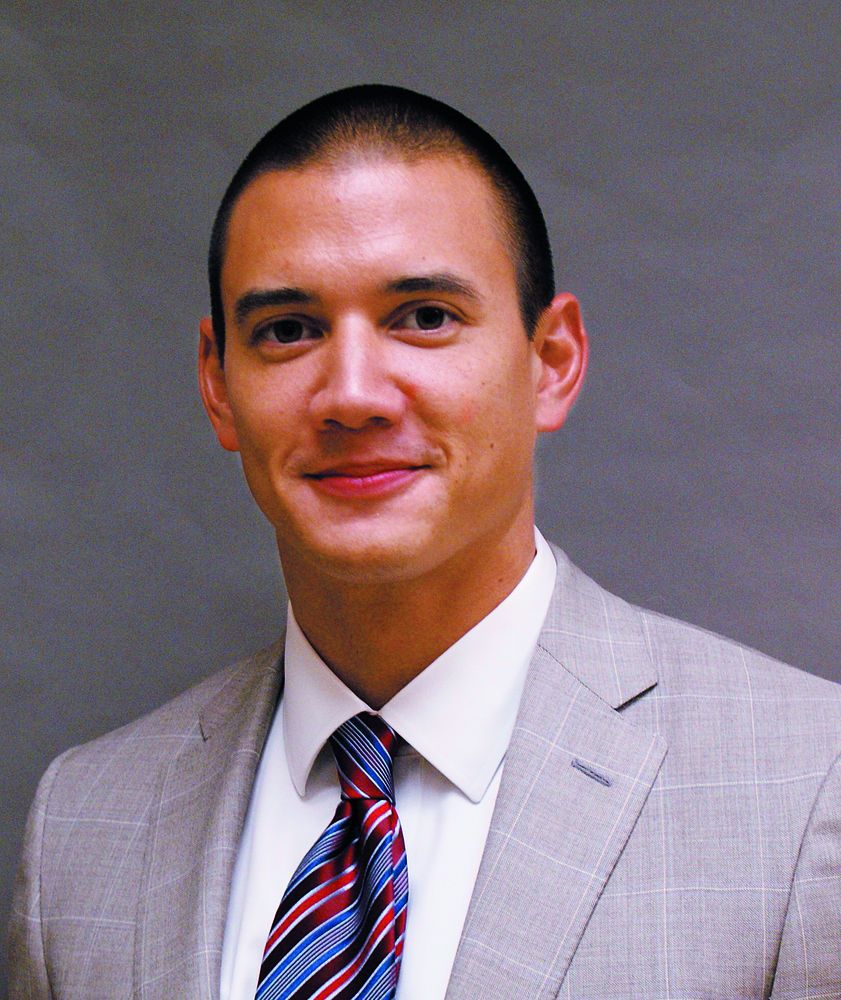
that inspiration came from one of those fabled “eureka” moments. Instead, it was something far more prosaic: an epochal ice storm coinciding with the 2011 NFL Super Bowl that shut down the Dallas/Fort Worth area for days and led to critical spot shortages of blood, whose ripple effects were felt in hospitals throughout the entire region.
Godfrey was curious about finding an explanation for the widely reported plunge in blood inventory, which also featured a hasty, largely uncoordinated series of appeals to the public to donate. “Part of my role as SVP of private equity firm HealthCap was to identify promising businesses in the healthcare market that were underperforming and to find out why,” Bloodbuy’s 34-year-old founder and CEO told Pharm Exec. “I reached out to contacts within the blood industry and started going down the rabbit hole, posing the basic question of how such a deeply rooted supply network could simply crash, especially as everyone had been able to see this weather event coming. I found it absurd that, with all the advances in data management and integration as well as the rise of predictive analytics, a predictable weather event could cause our patient population to face such a major public health risk.”
Godfrey discovered a fragmented national blood supply infrastructure, unevenly distributed resources, with sharp geographic abnormalities, resulting in a system mired in a constant state of disequilibrium. A silo mentality was pervasive and fiercely protected. Very few in the system shared information, while the vast majority of blood bank communications in this second decade of the new millennium relied on 1970s technology-phone and fax. “None of these infrastructure challenges seemed unsolvable, if only because blood procurement and supply is a remarkably small universe compared to other parts of the health system, with a participating national network of 4,500 hospitals, the Red Cross and some 50 or so independent blood centers. To me, it was a model opportunity to thoughtfully engineer a solution that would bring the entire blood ecosystem on line, using a modern IT infrastructure, and at a relatively modest cost,” Godfrey said.
Godfrey prepared a business plan for Bloodbuy, the centerpiece of which was a cloud-based, interactive, silo-busting web app that institutions could join to manage their stocks of blood. It used proprietary algorithms that filter key data on fulfillment, and matches need with available supply at a cost-effective price based on real-time conditions in the market. It’s essentially about diversifying risk. Hospitals will have a better chance of getting the blood products they need, when needed, and at an optimal price point. The blood supply centers get help with addressing the institutional decline in acute care services and resultant lower blood utilization, which makes decisions on how much blood to collect increasingly challenging, by seamlessly connecting the centers to new customers in need located outside their geographic space. Notes Godfrey, “Our pitch to partners from both sides is simple: Bloodbuy acts as a Priceline for blood products.”
Bloodbuy was incorporated as a privately held enterprise in 2013, with a staff of 12 and Godfrey as CEO. After launching pilot programs in cooperation with facilities at Texas Medical Center and other teaching hospitals, Bloodbuy closed an institutional financing round, raising $3.75 million with two strategic partners: Premier Inc. (NASDAQ: PINC), a leading healthcare process improvement firm; and St. Joseph Health, a California-based integrated care provider with facilities throughout the state and in New Mexico and Texas. Bloodbuy also signed a partnering deal with Premier Inc. in March. The two organizations now work closely to make Bloodbuy’s technology solutions readily available to the 3,600 hospitals participating in the Premier network. And in April, Godfrey and team won the first Harvard Business and Medical Schools’ joint award, the Health Acceleration Challenge, which recognizes innovative solutions that raise healthcare value. Bloodbuy beat out nearly 500 applicants from 29 countries, netting a $100,000 prize as well.
Godfrey earned an Executive Master’s degree in Healthcare Leadership from Brown University by evaluating just a few of the hurdles that had to be overcome to turn his concept into a viable business. Relates Godfrey, “Innovation is a popular catchword in healthcare right now, but the real truth behind it is painful. The healthcare system imposes an endless cycle of checks and balances that must be carefully understood and then leveraged in the context of the business plan.
Bloodbuy is creating a niche where the supply chain and the laboratory intersect, with vested interests on the line in functions ranging from lab technician to the medical director of transfusion services, or from materials management personnel to the CFO.
“Our model had to be validated as a new solution superior to the incumbent process, and to make it easily relatable and implementable for each of these key stakeholders. There are so many competing priorities: lab people are focused on safety and workflow, while those engaged in the supply chain are anxious about managing costs effectively.”
To make this a reality, Godfrey took a user-driven approach to product design and development. “When I introduced our solution to stakeholders, I titled it ‘A Day in the Life of a Blood Banker-What Does it Look Like?’ The solution has to be dynamic in a way that works in line with the commercial interests of each stakeholder, consistently and repeatedly, and at very low risk. Deploying the platform in multiple pilots also allowed us to identify blind spots in our data management and user interface systems that we might have missed initially.”
With the new business on its way, what has Godfrey learned that exemplifies the characteristics of an Emerging Pharma Leader in a start-up world? He cites three.
First is resilience. “Bloodbuy was a novel concept. You have to counter the uncertainty that pools around a new idea with an awareness of your customer’s motivations-not your politics, but their politics, including stakeholder hierarchies and competing priorities. Accept the risk inherent in this novelty while accentuating the positive side of what’s new. If a customer reacts to your plan by saying ‘I’ve never seen anything like it,’ claim it as a compliment rather than a criticism. Being associated with a change-maker actually has appeal to many people.”
The second is creativity. “I define this as a capacity to anticipate problems and then to execute in order to solve them. Another characteristic of creativity is a good head for thinking about design-how process, systems and data all fit together. That is going to be a high-value skillset of the future, whether your organization has 5,000 people-or five.”
The third is motivation. “I go back to my college football days, when I saw how a distinctly mixed bag of players could be inspired as a group to perform on all cylinders. It’s a healthy respect for differences that allows this to happen. We just hired a PhD in biology and one of the reasons for that is we thought his background would inspire us to think differently; he brings a fresh perspective. Strive for people who bring an entirely new dimension to the group-avoid perpetuating redundant skill sets. People on your team who are too much like you is actually demotivating to others.”
- William Looney
Saying No to the Status Quo
Michael Nally, President, Global Vaccines, Merck & Co.
An economics graduate, Michael Nally began his career at an investment bank in Chicago, but the work left him with “a bit of an empty feeling.” He went back to business school and while there was introduced to Merck & Co. (known as MSD outside the US and Canada) and MSD’s then Chief Financial Officer Judy
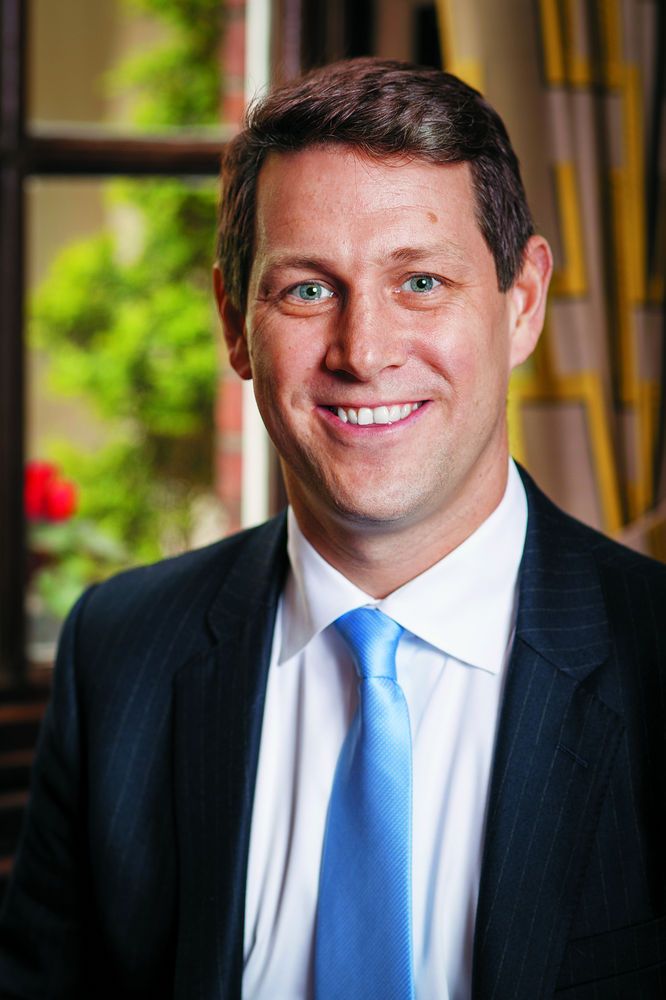
Lewent, who brought him into the company to work on competitive intelligence. From that point on, Nally’s career has left him feeling anything but empty; during his first years, he was “exposed to the company at the 30,000-foot level,” working in portfolio analytics, on the pre-commercialization of Januvia, and in communications as an external spokesman for the company at the time of the Vioxx trials and again during the merger with Schering-Plough.
The years of 24/7 working hours and wall-to-wall pressure were exhilarating and offered a steep but rewarding learning curve. Nally says he got to see “every part of the business, and only a handful of jobs have that perspective.” But he eventually knew it was “time to dial in and get a proper job” and chalk up experience of actually running an organization. Not being a scientist, he felt he needed to get closer to the end product. So he took an opportunity to lead the company’s Swedish business as managing director. The posting also turned out to be a great learning experience, not least from a cultural standpoint. “Swedes and Americans look similar on the outside, but the underlying orientation culturally is different. It forced me to grow and listen, to be patient.”
Squaring up to cultural challenges continued when Nally moved to the UK two-and-half years ago to take up the position as managing director, UK & Ireland. He notes that the political interface in the UK is much bigger than in Sweden. “In the UK, I probably spend 40-50% of my time externally oriented-with the government, with the Department of Health, with NHS England -working on policy-related issues. Also, we have a much bigger footprint as an organization here, so it’s a lot more about leading through others than individual leadership.”
Leadership is more than just a job for Nally. He remains a keen student of it. In his downtime he loves reading historical biographies of political, military and business leaders. “Resilience in leadership is something I’m struck by,” he says. “You can say a lot of things, but it’s what you do that ultimately matters. You have to hold your leaders and teams accountable for acting the right way, but you also have to be a role model.” It boils down to ethics and integrity and being able to inspire others. “How do you reinstill belief in what we can achieve? If you can get your team to focus in on what outstanding looks like again, I think you can surprise yourself and the broader organization.”
During the current period of industry malaise, inspiring others is more crucial than ever, says Nally. “Does the industry truly recognize how serious of an issue it faces? The patents on our products provide the pharmaceutical industry with a false sense of security as we are benefitting from work that was done 10 years ago. But the industry is in trouble; we’re going to see continued consolidation, challenges with R&D productivity, and payers exerting more power than ever before.”
Of course, the industry is intellectually aware of this, he says, “but you have a workforce that has been conditioned in the glory days of pharma. The burning platform isn’t as acute for us as it is in other technology industries. But we have to push that sense of urgency.”
In a career that has seen Nally eager to face new and diverse challenges at almost two-yearly intervals, it is no surprise that, as Pharm Exec went to press, he was about to take another step. After a successful tenure in the UK, which saw him help the organization become the first company to “really leverage” the country’s early access to medicine scheme, putting its melanoma product, Keytruda, into the program and bringing it to about 500 patients treated before marketing authorization, he is now taking up the position of president of global vaccines.
By his own admission, Nally “struggles with status quo.” He explains: “At some point in an organization there’s a time where you come out of an intense-change period to a business-as-usual period; I’m probably not the best leader in the business-as-usual period.” He is being modest, but his passion clearly lies in predicting the model of the future and understanding how he can deliver on it. “I love that intellectual challenge-how to mobilize an organization to really change the way it operates.”
As the industry stands at the moment, there is plenty for a leader of Nally’s caliber to tackle.
- Julian Upton
The Software Stylists
Andrew A. Radin and Andrew M. Radin, Co-Founders, twoXAR
In an unusual but fruitful coincidence, two of Pharm Exec’s 2016 Emerging Pharma Leaders happen to be named Andrew Radin. No relation; only their middle initials are different. Nevertheless, that shared surname proved the spark for a singular mission: to build a new company, twoXAR (two times Andrew Radin or “two czar”), dedicated to advancing a new approach to drug discovery using the advanced data processing and deep knowledge analytical powers of software-based comput ational biology rather than traditional
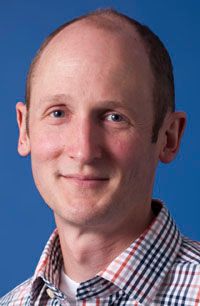
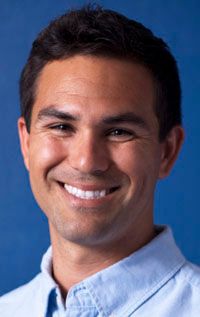
chemistry. twoXAR can chart a course to early-stage candidate discovery faster, and at significantly lower cost, than the “sift, test and verify” methods that have set the standard of R&D practice for decades.
“The easiest thing we’ve done so far is giving our company a name-literally, it says you don’t get one Andrew Radin but two,” co-founder and CEO Andrew A. Radin (above left), 43, told Pharm Exec. The first encounter came when the younger of the two co-founders, 31-year-old Chief Business Officer Andrew M. Radin (above right), asked if he could buy Andrew A.’s Internet domain name. The answer from the older of the two was a rather testy “no,” but in the course of Andrew M.’s courtship via email they discovered both were seeking ways to leverage their academic backgrounds into something more tangible than a shelf full of published peer-review papers.
Andrew A., who comes from a family with a history of engagement in social causes, also had a track record in leading engineering teams at data mining start-ups prior to launching twoXAR. One of them, Locationary Inc., was bought by Apple in 2013. Radin’s equity in the company allowed for some time off to use his computer science skills to create something with broader social value. This led him to a graduate-level program in bioinformatics at Stanford University. “Ironically, the relentless pursuit of practicality common to everyone who does tech in the Valley took me off the ‘publish or perish’ pedestal. It convinced me that a stronger focus on commercial imperatives-like filing a patent-could best fulfill my humanitarian impulse to show how technology can change the world. When I discussed putting my ideas about applying computer informatics to drug discovery into a research paper, the response out here was instantaneous: ‘you’re not going to publish this, you’re going to patent it.’”
Andrew M., a biochemistry and economics major at the University of California/San Diego, already possessed the entrepreneurial gene, having started a web development business while still in high school in Thousand Oaks, Calif.-just a short walk from the HQ of Amgen, the first successful big biotech. “I like to build things,” he says, which persuaded him to enroll in MIT’s MBA program at the Sloan School of Business.
Other mutual interests like travel in China kept the online conversation going between the two, leading finally to a face-to-face encounter during one of Andrew M.’s MIT field trips to Silicon Valley. “We clicked around his passion to bring meds to patients faster by applying big data to biology, and my interest in turning that passion into a real business-even better, one that disrupts.” At a later meeting back at MIT, both agreed on an enterprise mission: tackle a market challenge-the lagging pace and poor productivity of conventional early-stage drug discovery-and solve it, in a way that changes the world for the better and is both profitable and beneficial to patients.”
Andrew A.’s Stanford work, on algorithms created specifically to predict the most viable disease-to-candidate drugs, joined to Andrew M.’s investment banking and commercial build-out skills, led them to contacts with the local VC community, which, in turn, provided the seed capital for twoXAR. The company was incorporated in 2014 with 10 employees and the two men as principal shareholders, headquartered in Palo Alto.
An early, influential backer of twoXAR was the Valley’s flagship VC, Andreessen-Horowitz, whose belief in the power of technology to change the way entire industries do business was summarized in a 2011 Wall Street Journal op-ed, “Why Software is Eating the World.” The Radin duo captured this sentiment in their own follow-on investor pitch: “Software Eats Bio.” This won them $3.4 million in financing from Andreessen Horowitz’s Bio Fund and Stanford University’s StartX Fund. This has led to research collaborations with Stanford University Medical School, on rare disease applications in dermatology; Icahn School of Medicine at Mount Sinai, on diabetic nephropathy; and the University of Chicago, on atherosclerosis. Earlier this year, twoXAR snagged its first private-sector partner, Vium LLC, another Silicon Valley start-up using informatics to enhance the accuracy and reproducibility of in-vivo testing for preclinical drug candidates.
Embedded in the twoXAR business model is a strong contrarian streak. Drug companies instinctively associate computer software with a service-a non-essential but “nice to have” support tool. Wrong, say the two Radins. Their approach puts the cloud squarely in the service of investigatory biology, with a patent-pending, customized software-trademarked DUMA-that can roam unbiased through billions of data points associated with a specific disease indication to tease out trends and abnormalities and render predictive assessments of likely drug candidates, at a rate 175,000 times faster than conventional screening methods. Better targeting and faster timing carries a tangible payoff by adding more certainty to those early-stage markers, which helps de-risk the odds for failures at the costly later stages of development. It might be a stretch to reference such capabilities as discovery R&D on a disk, but it definitely breaches the standard software-as-a-service (SaaS) process model, which few big pharma now regard as strategic.
So far, the DUMA software has been run-tested on 55 therapy areas and conditions, including autoimmune disorders, cancer, neurological impairments, and metabolic disease. In June, twoXAR announced the results of a joint screening program with its partner Vium, for important new indications in rheumatoid arthritis. “Our data established preliminary in-vivo efficacy for 10 separate drug candidates that could be repurposed to treat various aspects of this debilitating condition. It further validates software-driven approaches in rapidly identifying new drug candidates,” the company said in a statement. Four other programs are now underway to accomplish the same thing, in other diseases, at the preclinical stage.
Yun Fang, assistant professor at the University of Chicago’s Department of Medicine, signed on to work with twoXAR after he saw the initial results on rheumatoid arthritis. “I was curious to explore how their in-silico approach would tackle atherosclerosis,” he said. “In the short time we’ve been working together, the twoXAR team has generated a dozen strong hypotheses around unique candidates that my lab will evaluate through in-vivo models.”
While the biopharma world itself remains hesitant about the idea of letting software lead discovery, both Radins insist that the big players will eventually come around. For example, there is an emerging interest in purchasing the IP or licensing compounds that the twoXAR DUMA software identifies as a new or novel disease target. Ultimately, the Radins tell Pharm Exec all this validation work could put twoXAR in a position to identify promising drug candidates, de-risk the opportunities through preclinical studies and progress them to the clinic through industry partnerships. “Long-term, our aim is to become a full product innovator, not just a leader in process engineering,” CEO Radin said.

What kind of leadership is required to move a new enterprise like twoXAR forward, from an idea to an institution? Andrew A. sums it up in a single word. Grit. “For nearly all start-ups, the odds are against you. It was particularly hard for us because of the alien complexity of the subject matter-computational biology. The standard response to our pitch would begin with the admonition ‘don’t talk mathematics to me,’ followed by the conclusion ‘what I don’t understand, I can’t evaluate, so I have to take a pass.’
“We had to break this fatal connection, and we did it by replacing the math with an of-this-world vision, using accessible story telling that linked the technology to a result that held meaning to them, which is the pathway to getting a drug primed for approval. We took the time to answer questions, listen carefully to objections, psychoanalyze the fears, and emphasize a specific result. I’d say this is a set of actions that apply to any new business-and I guarantee you will hear ‘no’ 80 times before you get the first ‘yes.’”
Adds Andrew M.: “Don’t forget the tactical side when you are building a business from scratch-we are used to doing everything, and it’s not just coding and meeting investors. The story of a start-up begins every morning when you remind yourself to do things like take out the trash. That’s what keeps you grounded.”
- William Looney
Moving Those Metrics-Up
Gwendolyn Whitney, Senior Director of Sales Analytics and Operations, Gilead Sciences
In today’s pharmaceutical marketplace, it pays to keep moving-complacency is not an option. Gwendolyn Whitney’s 17-year career in biopharma has been shaped by successive waves of disruptive change in the commercial and customer-facing sides of the business. That dynamic reinforced the 40-year-old pharma leader’s commitment to sharing her talents widely, taking on multiple roles, drawing fresh insights from the external environment, and always thinking

forward on strategy while never forgetting that ultimate success depends on fast and flexible execution to plan. The learning curve is ever upward, even as she has spent time in horizontal roles contributing to and leading across a breadth of commercial functions and therapeutic divisions.
As a first-year student at the University of Missouri-Columbia, Whitney pursued a nursing degree. Her parents, who both made lifelong careers at Boeing, wanted Whitney and her sister to explore career paths that offered stability. During her junior year, several mentors urged Whitney to consider a business degree. She did and landed her first post-college job in 1999 with Roche Pharmaceuticals, as a sales representative. Positions that interact with and focus on sales continue to be Whitney’s favorites. “When you are able to evolve a customer’s thinking through data and science in a way that helps them help more people-that’s such a huge win,” she said. After a year and a half with Roche in St. Louis, Whitney signed on as a diabetes product salesperson for Takeda Pharmaceuticals, where she further sharpened her skills carrying the bag for two years in her hometown city.
Several of her mentors encouraged Whitney to aim for positions with greater responsibility. So by June 2002, just three years after college, she became a district sales manager at Takeda, overseeing the Actos, Niaspan and Advicor business in three states. The St. Louis native took a larger leap in responsibility in October 2004, when she became hospital district business manager for a heart failure drug made by Lexington, MA-based NitroMed, a company bought by JHP Pharmaceuticals in 2008. During her four years with NitroMed, Whitney continued to move up the ranks. In 2006, she became senior manager of sales operations, where she focused on sales training, commercial analytics, incentive programs for sales and managed markets operations. Whitney oversaw national “pull-through” strategy with managed care contracts.
In January 2007, Whitney was promoted to a national account director of managed markets. In just one year’s time, she nearly doubled access in Michigan’s market for NitroMed’s BiDil by getting the drug placed on the Tier 2 formulary without the leverage of discount pricing. Whitney worked tirelessly with national, regional and group purchasing organization payers and accounts, including Express Scripts, MemberHealth, Harvard Pilgrim and state Medicaid programs to ensure the best possible positioning of BiDil on drug formularies.
As NitroMed prepared to sell, Whitney decided to sharpen her business acumen by enrolling in St. Joseph’s University executive MBA program in Philadelphia. Emboldened by a challenging internship with Abbott Pharmaceuticals, she set her sights on a role with even greater demands. In December 2009, she hired on as Gilead Sciences’ regional director of HIV sales, leading a team of therapeutic specialists in the Midwest region. Once again, under Whitney’s guidance, key metrics began to rise. Gilead colleagues noticed Whitney’s strong leadership and a managing style that blended collaboration and execution.
After a promotion to director/function head of commercial learning and development in Gilead’s Foster City, Calif., HQ office, Whitney began guiding team members to become managers themselves. “Our growth and development support philosophy was 70-20-10,” Whitney said. This meant that 70% of a person’s development should come from on-the-job experience and assignments. Another 20% should stem from coaching and the final percentage should come from what the individual chooses to pursue personally, whether it be instructions in new skills, text-based learning or extra training.
Throughout her career, Whitney has been on the frontline of business transformation, holding increasingly high visibility positions in the commercial leadership, including senior field sales management. “I’ve tried to make sure I possess a 360-degree view of the field,” she said. “The more of the picture you understand, the more strategic value you are able to add.”
All of this has led her to her position today, as head of sales analytics and operations for Gilead’s North American market. She leads a team of 27 in commercial operations that work across four verticals, seven therapeutic areas and managed markets. She and her team rely heavily on data and analytics to measure the impact of commercial decisions or consider how to better allocate sales resources. Her team’s ability to identify, assess and execute among a diversity of options, from both a strategic and operational perspective, for both the short and long-term, is perceived by Gilead’s top management as increasingly valuable-for example, there are many trade-offs that have to be navigated to ensure a strong product launch. The proof point? In her seven years with Gilead, Whitney has helped usher more than nine products to market in therapy areas ranging from HIV to hepatitis C and cancer. “Every day is different,” Whitney said. “I might be talking to one group about sales force optimization, addressing issues around commercial effectiveness, discussing payer analytics trends or answering questions on specialty pharmacy data strategy-all in one day,” she said.
Whitney also is expansive about sharing her insights and expertise with others. She is a mainstay of Gilead’s Corporate Mentoring Program, and she has personally supported the career progress of dozens of individuals across the entire commercial organization. In fact, developing people is the activity that she enjoys the most. For younger people joining the pharma industry, she encourages flexibility around relocating if it means better alignment with career goals. It’s also important to join the industry for the right reasons. “If your core doesn’t align with patient care, then it’s probably not an ideal industry for you,” she said.
Whitney also warns against chasing the next role. “Put your head down, do your current job well and by the time you look up from that focus, there will be something new waiting for you,” she said. Through it all, Whitney has kept up the energy and stamina that first caught the attention of her mentors in college. “Sometimes my mentors pushed me when I didn’t want to be pushed. But the more you take on roles that you didn’t know you could do, the more you learn and the more likely you are able to successfully to do that again and again in broader roles as your career grows.”
- Kathleen Raven
Giving Life to Ideas
Stacy Feld, Senior Director, Consumer Scientific Innovation, Johnson & Johnson Innovation
“Great ideas come from everywhere,” affirms Stacy Feld of Johnson & Johnson Innovation (JJI), located in Menlo Park, Calif. As senior director of consumer scientific innovation, Feld is eager to bring inventive healthcare solutions quickly to markets where they can be most impactful. “I’m motivated by the potential
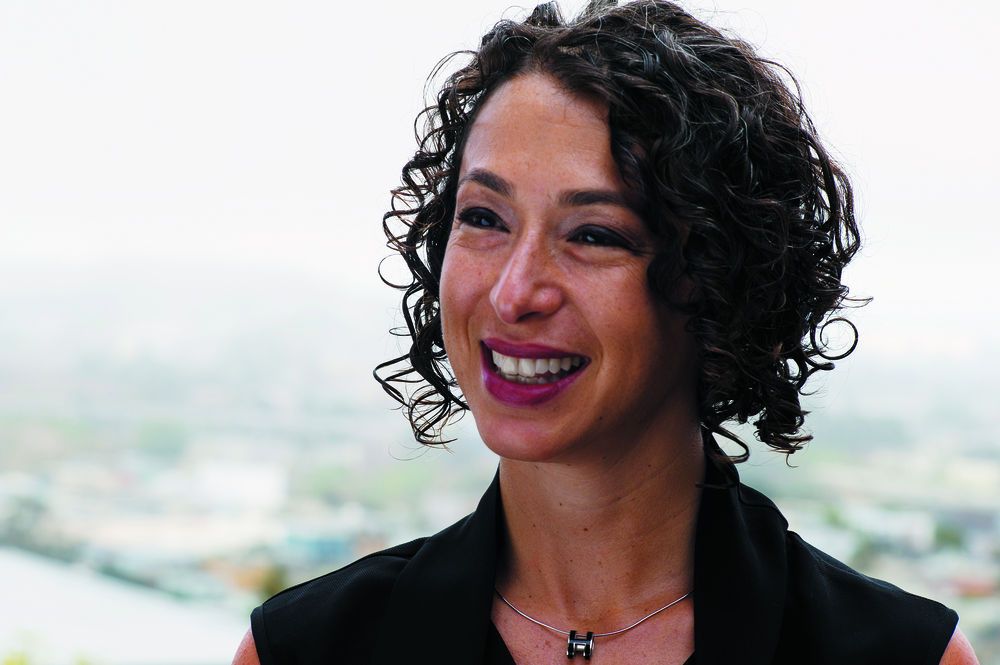
to bring innovation in healthcare to the consumers, bringing partners together and ultimately helping people lead healthier lives.”
In her role, Feld strives to build upon J&J’s existing consumer portfolio by establishing a pipeline of collaborations that bring together its internal scientific teams with the external world of medical and consumer science pioneers. The Innovation Center, part of JJI, J&J’s outward looking innovation platform, is tasked to provide up-and-coming researchers and visionaries with partnership and collaboration opportunities across pharma, medical device and consumer products, ultimately fueling the behemoth’s pipeline. With her externally facing role, Feld gets the chance to look across the R&D continuum and forge unique connections with entrepreneurs, offering them the sense of scale that J&J can bring to bear.
JJI takes a multipronged approach to working with innovators, funding, housing and sometimes guiding their efforts. JJDC, its corporate healthcare venture fund of over 40 years, makes equity investments in companies that are of strategic relevance to J&J’s current and future sector focus areas. Its biotech incubator, JLABS, offers worthy applicants capital-efficient, flexible lab and office space in addition to other benefits in hopes of helping young teams with bright ideas get a leg up for accelerated growth, with no strings attached. And the Innovation Centers with Boston, Shanghai and London locations, in addition to the Menlo Park office, establishes relationships with researchers in the local ecosystems, led by teams that provide skills and services in R&D, product development, transactional and legal advising, finance, business development and communications. “Our team is balanced with all the expertise, capabilities, talents you’d need to drive a collaboration,” Feld says. When you add it all up, it’s clear that J&J sees value in a form of community science outreach that allows the pharma giant a view of what’s coming.
Part of Feld’s role is simply to “deconstruct and demystify what JJI can do,” she notes. As a liaison, a big part of Feld’s work involves opening up the practically limitless resources J&J can offer a researcher or entrepreneur. But it’s also important for JJI to meet these researchers at their level, to bring to light the challenges they face and help J&J understand what it takes to build a business with limited means and initially focused on a narrow application rather than a mass or more generalized use of a solution or product, she explains.
In spirit of breaking down silos, the Innovation Center gives Feld, who focuses primarily on the consumer side, unique access. “We have professionals from all sectors present under one roof,” she say. “That’s different than the rest of the company, which is very decentralized. It’s a unique space where we can reach across the aisle, to explore collaborations with our pharma or medical device sector, for example. We can really celebrate the uniqueness of J&J bringing these different minds together.”
Expanding J&J’s portfolio, Feld brings a particular emphasis around the areas of precision medicine and consumer genomics. “On the consumer side, we started to think about how to diversify the portfolio and looking more at diagnostics and continuous monitoring, for example; we really do a lot of thinking about building out the whole healthcare ecosystem. And this brings us closer to consumers as well,” she says.
Feld began her consumer-minded orientation well before coming to J&J. After getting her law degree at Vanderbilt, she worked as an intellectual property licensing attorney with Wilson Sonsini Goodrich and Rosati. She then moved to Third Wave Technologies to direct its licensing and business development efforts, before landing in Genentech’s business development group. From her collective experiences seeing patient empowerment via technologies like direct-to-consumer genomics, it’s no surprise that Feld came into the orbit of 23andMe, for which she was involved in funding the company’s first-round capital while at Genentech.
Feld began following the wave of innovations from the life sciences to new materials that were able to help consumers take better care of themselves, be it in managing disease to managing their environment. “I started to see how technologies could enable new trends within consumer health.”
She then moved to Physic Ventures, a venture fund focused on keeping people healthy, where Feld led investments in personalized health and diagnostics for nearly seven years. “These ideas around consumers empowering themselves around prevention and self-care, self-diagnosis as we move from a mindset of ‘sick care’ to ‘health’ were fresh ideas 10-plus years ago,” she explains.
In coming to JJI, Feld says that she began following how large companies were trying to understand how to factor early start-ups and entrepreneurs into their innovation agendas. “They really are different worlds, and J&J was setting up this platform, not to merge them into one, but to bring them together, so that large companies can work to enable innovation.”
- Casey McDonald
Driving the Deal
Nouhad T. Husseini, Vice President, Business Development, Regeneron Pharmaceuticals
When Nouhad Husseini joined on at Regeneron in 2011, he faced a company at a crucial juncture in its growth. After 25 years of sometimes worrying about “keeping the lights on,” Regeneron was launching its macular degeneration blockbuster Eylea, and a new era was in sight. Cash would be on hand, and the industry would come to know a different Regeneron.
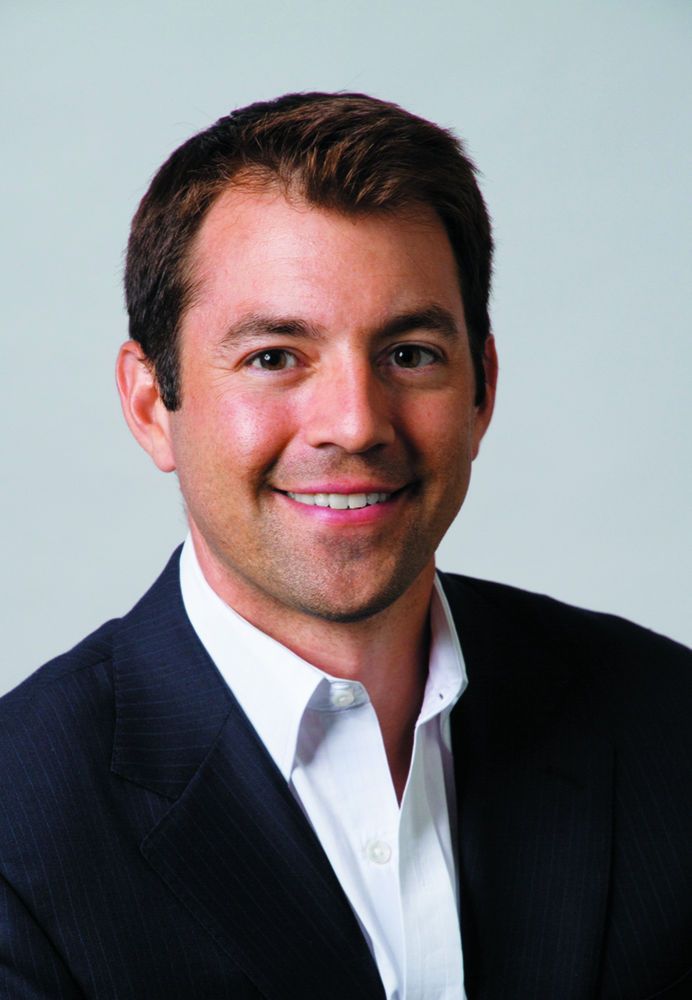
Regeneron had done a lot of deals throughout its history, most notably its strategic R&D alliance with Sanofi and its ex-US partnership with Bayer on Eylea. Those deals were structured and led by the executives in the C-suite; the business development (BD) function had a very different role and mandate at that time, Husseini said. “Finding those partners to help us fund our R&D and execute globally was a no-brainer, but there was little perceived urgency for doing more business development once those deals were in hand.”
Regeneron has always prided itself, and still does, on being a cut above the rest of the industry when it comes to innovative science. If you’ve ever had the chance to hear Chief Scientific Officer George D. Yancopoulos speak toward the company’s scientific pedigree, you know it’s a point of emphasis.
And so with this focus on the company’s internal innovative prowess, the culturally-ingrained attitude toward in-licensing or acquiring external technologies was typically a response of “let’s just build it ourselves.” The cultural confidence in its internal R&D capabilities is important, but as the Eylea dollars began coming in, Regeneron had an opportunity to expand its mindset. In order to fully redeploy its newfound resources and optimally position itself to explore the widest range of opportunities, the firm would have to be willing to expand beyond its traditional internal focus. While leadership had always acknowledged “not having a monopoly on good ideas,” when Husseini arrived in 2011, the biggest challenge facing him was changing hearts and minds to view R&D collaborations as an important part of the company’s strategy-and also to assume a new role of mentorship for promising upstart biotech companies.
The first big in-licensing deal on this new trajectory was struck in 2014 with Avalanche Biotechnologies to collaborate on novel gene therapies for ophthalmologic diseases. Though the deal was moderately sized, it “marked a milestone for Regeneron in its willingness to invest in external innovation,” Husseini said.
Regeneron followed with a deal in April of this year for $125 million upfront and equity to partner with one of the key players in CRISPR/Cas9 gene editing, Intellia Therapeutics, and a more recent deal with Adicet Bio in the emerging field of CAR-T therapeutics. Intellia timed the deal with a $108 million IPO, signaling that the public market agreed that Regeneron was making a good ally in this hot field.
The Intellia and Adicet collaborations are a model for Regeneron moving forward, Husseini said. “Doing deals like these allows Regeneron to leverage its standout technologies in emerging new fields while also allowing it to avoid simply ‘growing the mothership’ and risk losing the innovation-friendly culture that has emerged from its many years as a small, hungry biotech.”
Managing the BD team, which consists of six others and Husseini, brings other challenges. These are high performing individuals who are entrusted to quarterback a deal in its entirety, from the sourcing and due diligence all the way through the nitty gritty details of contracts, he explained.
Husseini draws on his own upbringing and an impressive who’s who of biotech mentors as he manages the intellectual horsepower of his Regeneron BD team. A Silicon Valley pedigree doesn’t hurt either; Husseini grew up in the Stanford vicinity, the son of an engineer entrepreneur and CEO of a publicly traded semiconductor company. His first coast-to-coast move was to attend Princeton on the molecular biology path. After deciding a career in bench science was not his destiny, he opted for Wall Street to explore the business side, getting his first biotech investment banking position at Robertson Stephens, then moving to Morgan Stanley. Husseini counts a pair of fortuitous and influential mentors from the investment banking days, Steve Harr, now CFO at Juno Therapeutics, and Michael Aberman, currently Regeneron’s senior VP, strategy and investor relations.
Like these mentors, Husseini decided to pivot to industry, grabbing an MBA at UPenn’s Wharton School along the way. An internship at Amgen preceded a position in corporate finance at Genentech, reporting to then-CFO Dave Ebersman, notably the former CFO at Facebook and currently CEO/co-founder of Lyra Health. Husseini was able to distinguish himself in this role and moved over to the company’s BD side, working under Tom Zioncheck. Zioncheck was a veteran from Genentech’s early days, when the company’s BD unit had a reputation as the “Navy SEALs” of biopharma-highly capable and savvy professionals.
Roche’s acquisition of Genentech “triggered an exodus, as you might imagine,” Husseini said, and though he was not looking to leave, a meet-up with Aberman at the JP Morgan conference and the rare opportunity to take on the new opportunities at burgeoning Regeneron was all it took to pique Husseini’s interest in another East Coast move. Now building on five years for the biotech, and a revised corporate outlook, Regeneron and Husseini have taken a prominent position in the industry as top science innovators and patrons.
- Casey McDonald
Big-Picture Thinker
Mike Klobuchar, Vice President, Business and Financial Planning, Merck & Co.
For Mike Klobuchar, seemingly at the launch point of a career rise in chemical engineering, a funny thing happened on the way to Princeton University to seek his PhD. He received a job offer from big pharma giant Merck & Co. Confronted with the attractive but difficult choice, he decided to break from the linear educational path common in his field of study-and rather than commit to another five years of schooling, put his skills to the fire.
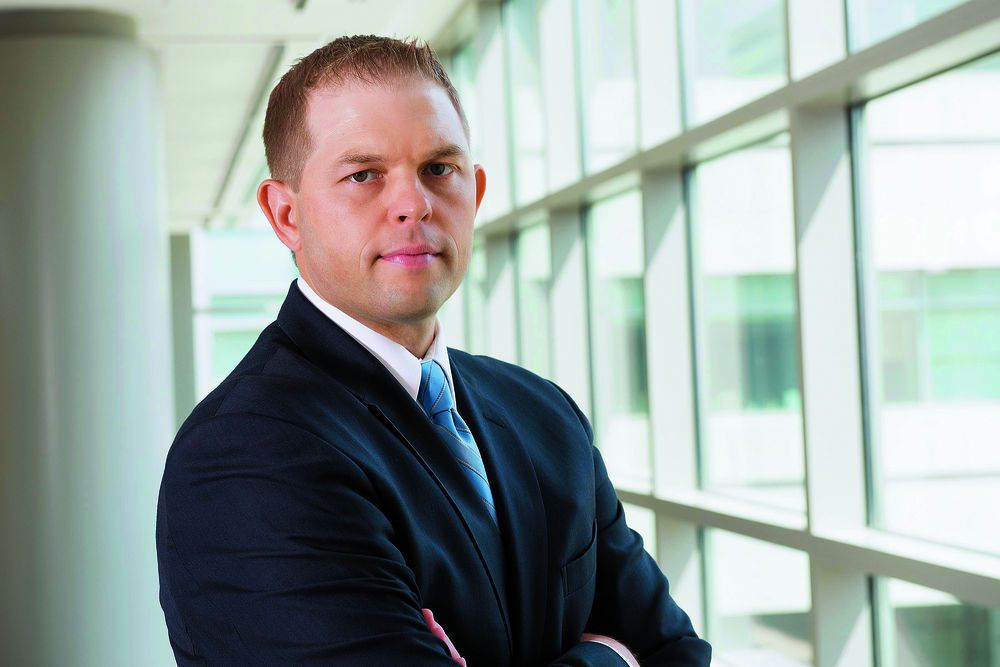
That was 1998. Almost 20 years later, Klobuchar and the company he joined out of college and has stayed with since-racing on a function-spanning journey from R&D and manufacturing to chief of staff for Merck CEO Ken Frazier and now steering finance transformation and cross-divisional strategy-are happy he went off script.
“I wanted to test myself. I thought I was pretty good, but didn’t know how good,” says Klobuchar, a Purdue University grad at the time, with a B.S. in chemical engineering.
Landing at one of the top pharmaceutical and R&D organizations in the world, he says, was the ideal setting to see how his abilities stacked up. Joining Merck as a traditional process development engineer, Klobuchar spent his first few years with the company staying close to his technical roots. His work included designing more robust synthetic routes for APIs and conducting analytical techniques such as high performance liquid chromatography and mass spectrometry. He also managed the batch production and process development of Merck preclinical drug candidates in several multiscale pilot plants.
Along the way, Klobuchar spent a year in Puerto Rico, helping lead a plant launch and scale-up, and in 2002, he collected a master’s in chemical engineering from Rutgers. It was during this phase of his career, Klobuchar says, that he began to develop an interest in business and finance, sparked by the frustrating interplay that exists between R&D uncertainty and financial performance.
“It was a time where we experienced a lot of programs that never made it to market,” says Klobuchar. “What got me intellectually curious was knowing that if you didn’t yield revenue on all the technical resources that were being plowed in-from R&D through manufacturing-it just wasn’t a sustainable model. You start to think, well, maybe I could have contributed in more important ways if I was able to help frame the ways in which programs are selected, how the portfolio is managed, how resources are deployed.”
Shedding his lab coat, Klobuchar, now working as a manager in Merck’s research business operations-covering basic vaccines, biologics, and M&A integration-earned an MBA in general management from Villanova in 2006. From there, the Michigan native would take on increasingly broader strategic planning roles for the drugmaker in such areas as preclinical development and basic research. His accomplishments included installing the organizational design for Merck BioVentures, the company’s one-time independent biosimilars unit. As executive director of global discovery and preclinical finance, Klobuchar co-led the design and operation of the first Merck Research Corporate Venture Fund, which directed $250 million in equity investments to establish closer biotech relationships.
“I was able to talk to pure business folks but also talk to the scientists,” Klobuchar notes in describing his research finance approach. “Having cut my teeth in the labs, I was able to serve as a translator across the company. … What I found is that if you bring relevance to people’s work and you tie what they’re working on to something that’s critically important, it goes to the basic human instinct that we all get up for, which is to feel valued and feel we’re doing something that’s meaningful.”
Klobuchar’s next promotion would put such enterprise-wide thinking on its biggest stage yet for the New Jersey resident and father of twin 8-year-old boys. In 2012, Klobuchar, at age 37, was named associate vice president and chief of staff to the chairman, CEO, and president. He remembers his interview with Frazier, a former lawyer who joined Merck in 1992 and took over as chairman and CEO in 2011, as lasting “exactly eighteen minutes”-and in a good way. Klobuchar clicked quickly with the CEO, articulating and drawing from his multi-division background where he saw opportunities for the company to achieve success. That was enough for Frazier, who called him later to offer him the job.
“It was the moment of selection where he believed in me more than maybe I believed in myself,” says Klobuchar. “And that is so powerful. That feeling is something I seek to create in others.”
Now guiding executive-level support, Klobuchar led a number of administrative and strategic business initiatives. One notable example during his tenure was Merck’s initiation of a $2.5 billion restructuring effort in 2013, which included the creation of a new Center for Observational and Real-World Evidence. During this time, Merck also established a new oncology unit focused on immunotherapy treatment. Through the restructuring, Klobuchar was able to drive improvements in how Merck operated-not strictly in capital allocation and achieving cost targets, but, beyond the numbers, in creating a more competitive, efficient, and agile organization.
“That role allowed me to get inside the head of the CEO and understand what he sees and what is disconnected underneath in this company,” says Klobuchar.
The Merck executive continues to cultivate that “outside-in” mentality in his current role, leading short- and long-term business and financial planning for the company. Managing a staff of over 50, Klobuchar directs cross-functional activities designed to optimize Merck as a whole-financially and operationally. Benefiting that mission, he says, is his team’s unique position as an “unconflicted,” neutral third party, enabling it to bridge the disparate strategies and agendas inside the company to reveal a complete P&L profile for Merck. And then, working back, build improvements into the profile through cross-divisional-oriented approaches.
Klobuchar reports to Merck Chief Financial Officer Robert Davis. He says he’s grateful for mentors such as Davis, Frazier, and Merck head of R&D, Dr. Roger Perlmutter, for “pushing me and allowing me to be more comfortable with discomfort; the belief that real development and comfort never coexist. That nudge from them to say, ‘yes, you could fail, but this is really something that you had to do.’”
Merck, itself, has not shied away from demonstrating that philosophy in recent years. Analysts, in 2016, have been encouraged by Merck’s efforts to expand its pipeline. The company has also decided to invest more in exploratory and biomedical research. Keytruda, Merck’s breakthrough immuno-oncology therapy, won approval in the past two years for metastatic melanoma and non-small cell lung cancer, and, for the latter, showed strong results in a recent clinical trial as a potential first-line treatment. Commercially, Merck is projecting revenue of $39.1 billion to $40.1 billion in 2016 behind products such as Januvia, Janumet, Gardasil vaccine, and Keytruda. Given today’s challenging drug development and pricing climates, Klobuchar knows his team will play a critical role in the 125-year-old company’s future trajectory.
“I was really passionate when I started about solving technical challenges,” says Klobuchar, a motorcycle enthusiast and avid reader in his spare time. “But now I equally want to solve really complicated things that will create long-term value for Merck.”
- Michael Christel
Technology Risk-Taker
Sabina Ewing, Vice President, Business Technology, Pfizer Inc.
By her own admission, Sabina Ewing used to be risk averse. That was until she spent a year teaching fifth grade in a South Bronx public school. Previously, she’d been building a career as a manger in business consulting at Arthur Andersen LLP, but when Andersen was indicted in the Enron scandal, she took the plunge and tried something new, something far outside her comfort zone. It was a job that helped to

change her outlook on life and work.
Ewing taught for a year-a “wild ride,” she describes it-but after that returned to the corporate world. She went back to consulting at Bearing Point and then at American Express. Keen to move on again, when a friend suggested she should look at the pharma industry, the newly emboldened Ewing decided to give it a try.
She joined Wyeth in 2007 as a project director for business systems and processes and was soon able to push herself forward when Pfizer acquired Wyeth in 2009. “When you go through an acquisition, you can become a number, so I raised my hand and asked if I could be in on the integration activities,” she says. “I ventured into a space I hadn’t been in before and took on a program that other people were running away from.” She led the delivery of an interim global logistics and supply chain enterprise resource planning (ERP) solution for Pfizer’s integration of Wyeth, and was responsible for the retirement of the Wyeth’s legacy commercial financial applications.
This got Ewing noticed by Wyeth’s Chief Information Officer Jeffrey Keisling, who later selected her as his chief of staff and became one of her valued mentors. Keisling, says Ewing, “gave me an opportunity to really see how you run a technology organization in a 21st Century way.” She credits his leadership as one of the reasons she has stayed in pharma for the last nine years; she responded to the vision that business technology is not just about providing the company with its infrastructure, devices and systems, but is an essential contributor in achieving value and impact. She now leads business technology for four of Pfizer’s divisions: HR, legal, corporate affairs and compliance, and global technology services.
“There’s no better place to be a technologist than within pharma,” she explains. “Because you now have an opportunity to have an effect on the lives of others as well as the company’s growth and performance.” To this point, one of the things Ewing is most proud of during her time leading Pfizer’s global vaccine business technology organization is when she helped to achieve a faster adoption within hospitals and health institutions of the Advisory Committee on Immunization Practices (ACIP) recommendation for the company’s adult pneumococcal pneumonia vaccine, Prevnar 13. “We knew that once we received the recommendation, the typical time it took hospitals to implement it was substantially longer than we wanted to wait,” says Ewing. “So there was an opportunity for us as technologists to identify ways in which health information technology and our understanding of it could be leveraged in a compliant way to accelerate that.” The result saw tremendous growth of Prevnar 13 in 2014 and 2015.
“We were able to bring a life-saving vaccine to adults in the US even faster, while at the same time helping our company and shareholders,” says Ewing.
This sense of compassion and responsibility, which led her into that teaching role over a decade ago, is something that Ewing has developed further at Pfizer as she has risen up the corporate ladder. She has been a member of Pfizer’s Global Blacks Council (GBC) and co-chair of the Pfizer African-American Leadership Network and now serves as chair of Pfizer’s Global Women’s Council.
“I want to see more girls, particularly girls of color, in technology. Anything I can do to serve as a role model and actively engage around that, I’d like to do,” she says. “On the one hand you want to entice young women to head off to college to pursue degrees in technology and computer science. But there’s also the issue of women who are already in IT. A study found that the mid-level is where you lose women in IT. Instead, I want them to stay and grow.”
Working with Keisling and other mentors such as Susan Silberman, Pfizer’s president and general manager, global vaccines, changed Ewing’s perspective “on the possibility of becoming a chief information officer.” It was a job she didn’t originally seek, but with those risk-averse days behind her, leading and and driving a vision at the CIO level while advancing the industry’s effort to improve diversity and inclusion is now within her scope. As she says, “I don’t think we’ve fully unlocked that role yet.”
- Julian Upton
Steering the Value Message
Eric Jordan, Vice President, US Payer & Institutional Strategy Lead, Shire
Value has been a moving target for the healthcare industry. And no company has tracked the debate more intently than Shire, a standard bearer in rare disease, where big outcomes demand sizable price tags for small patient populations.
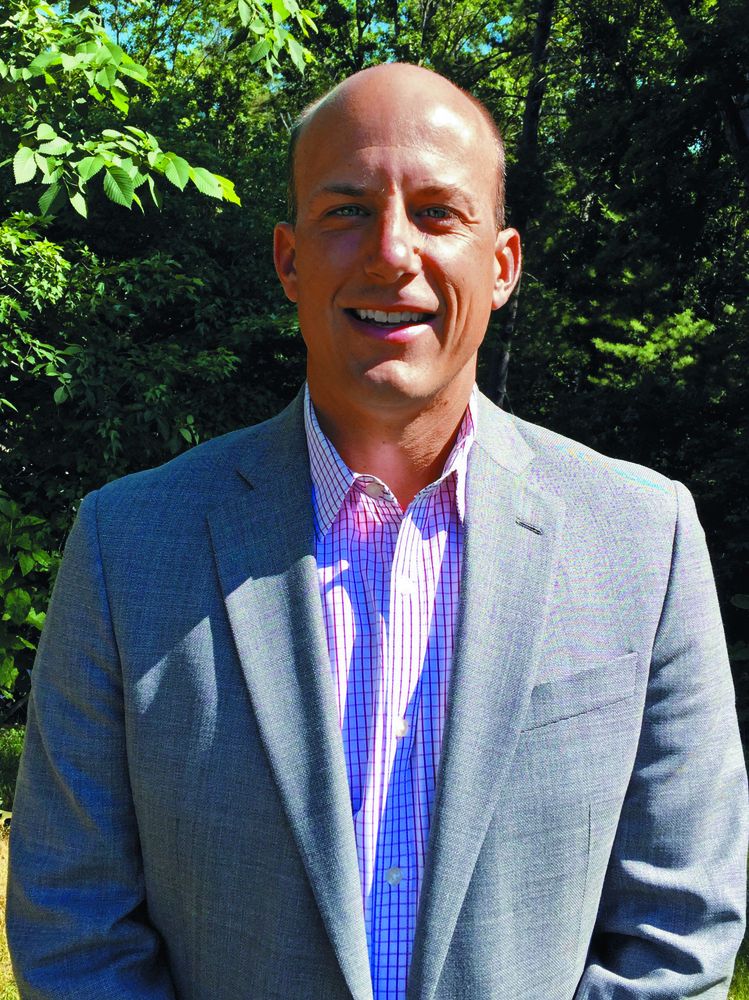
Making the case for Shire’s products and the value they bring to the healthcare system is US Payer & Institutional Strategy Lead Eric Jordan, whose team’s “remit is to best communicate the value of our products to the payer community, employer groups, institutions and channel partners. The group’s focus is helping provide healthcare providers and patients with affordable access to our medicines.”
It’s an issue that has come into focus and has seemingly “hit a critical mass over the last three to five years,” says Jordan. The consolidation of payers has left them with a greater ability to control the market, and, thus, “constantly on our mind, is their appetite to do so,” explains Jordan.
Payers have become more and more aggressive swinging their weight around in negotiations to determine the value of a treatment and the resulting formulary placement it deserves. “It’s become increasingly important for pharma to develop healthier relationships and appropriate partnerships with the payer community and to better demonstrate our value proposition,” says Jordan. He notes that payers make the dealings challenging, using tactics like larger initial asks, aggressive benefit designs and shortened timeframes in which to submit bids.
“The healthcare dollar is being squeezed from all sides,” he says. “At the same time, innovators in rare disease like Shire are bringing to market new therapies that can help those suffering from life-altering conditions. We have to find a comfort zone where payers are getting value for their healthcare expenditures and patients have affordable access to the therapies their physicians have prescribed.”
Jordan sees increased vigilance by payers in rare diseases and Shire’s advocacy on the part of these patient groups as essential for the company to be a leader in the space. As Jordan has taken on greater positions of leadership in his own career, he has seen the importance of team building, communication and dedication-having patients at the core of everything he does.
Starting out “carrying the bag,” it would appear that Jordan’s ascent up the corporate ladder may have followed the quintessential pharma path. He enjoyed day-to-day contact with physicians and had a strong ability to gain his customers’ trust, even though he self-identifies as “more reserved than the typical sales person.” Jordan followed his success as a rep and regional manager located in Charleston, SC, and then Orlando into a business operations position as director of sales force effectiveness, relocating to Philadelphia. Here he was able to combine his love for leading teams with a passion for diving deep into analytics. Jordan’s subsequent titles included: Southeast zone director, director of government marketing and director of global market access-neuroscience business unit.
Along the way, Jordan credits establishing and leading teams with strong analytics capabilities and executive function to prioritize and complete tasks under pressure. Hiring well is clearly a vital part of building one’s own success, he says. “I look for individuals with optimistic attitudes, a drive for achievement, initiative, and a tremendous work ethic being essential.” Experience is secondary, as it’s more important to be able to learn. “We set high expectations, and make a point to recognize and publicly reward achievement.”
For Jordan’s team at home, the journey has included six moves, for which he credits a very understanding wife who has the uncanny ability to adapt and thrive in new environments, having never met a stranger. “She is the life of the party and makes friends faster than most,” he says.
With the most recent move, Jordan and his family of four are adjusting to suburban Boston. While adapting to the new city and the northern climes, Jordan remains active in his church, and coaching his son’s sports teams. Such participation has been a positive way for him and his family to develop ties in the community. As a measure of consistency during his move to New England, he continues to manage Shire’s golf league, which he feels allows for deeper relationship building, occurring outside of the Hayden Ave. office. As an envoy from the south, Jordan brings a love of BBQ to a region in need. He and his son’s shared dream, if this pharma thing doesn’t work out, would be to open their own BBQ joint, called BBQ Brothers.
- Casey McDonald
Access Visionary in Asia
Jason Smith, Managing Director, Singapore and Asian Emerging Markets, Novartis
Majoring in Economics at Yale, Jason Smith began his career in fast-moving consumer goods as a core brand marketing manager at Procter & Gamble. But after six years, he and his family “decided to change everything about our lives.” In February 2003, they upped sticks and moved to Basel, Switzerland, where Smith took a position in global marketing and sales with Novartis. He
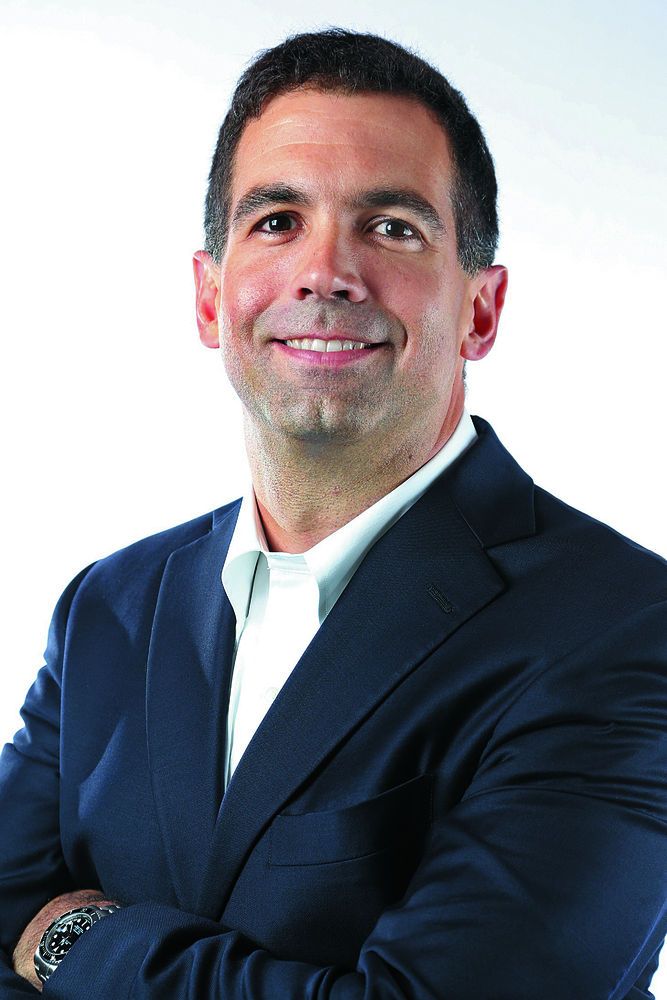
expected to be outside of the US “for about two or three years,” but six Novartis roles later, he is still happily ensconced in pharma, now as the company’s head of Asia cluster in Singapore.
Smith’s Novartis career spans HQ roles in emerging markets and running one of the company’s global franchises in Parkinson’s disease, but it was when working as a general manager (GM) in Denmark that he realized he had found his calling. The GM role afforded him, he says, “the ability to impact a business, a culture and, most importantly, work very closely with the team around me.” As well as in Denmark, Smith took GM roles in Portugal, and, just before the Singapore posting, for Australia and New Zealand.
Now overseeing 17 countries, about a billion dollars in sales and around 3,000 employees, Smith rates identifying and developing talent as the thing that most appeals to him about his job. He has helped to institute a young Asian talent program, which puts a select group of employees through “a very robust program, with learning, mentors, exposure to senior management and mandatory rotation in other countries that will help us validate the potential we think we see.” Smith believes that leading across many countries and cultures is about agility. “We’re looking for change agility,” he says, “for people who can deliver results across changing situations. But the hardest, most important component of the program is people agility. That’s why we implement project and country rotation; it is important to start that early and really foster that ability to work and deliver results across cultures and countries.”
Smith credits having the same coach (Sunita Malhotra, now owner and managing director of People Insights, Belgium) for the last seven years and across four jobs as helping him understand that his role these days is not to “take over in a crisis” but to help ask the questions and facilitate the discussion, “so that the team comes up with a decision, even if it is not necessarily the exact decision I would take.” This focus on leadership excellence is key to assuring a meaningful legacy, Smith says. It’s also the most important driver of long-term business results-which is why the early and constant focus on people is so important. It’s something he successfully achieved during his three years in Australia and New Zealand, where he helped build a “tremendous leadership team” and saw them “flourish quite selflessly, tackling some of the deepest competitive and organizational challenges and doing it in a way that was the furthest thing from competitive with each other.” A year on, Smith is proud to see the results that the team achieved, as well as “a number of promotions from that team, people going to other parts of the world. Those are the things that stick with me the most.”
While Smith looks for “solid performers,” he says it is important that leaders are humble enough to be aware of, and crucially, to be open about, the mistakes they’ve made. “When we sit down for a performance review or an interview I ask, ‘What did you fail at this year?’ The answers you get usually describe something that is a long way from recognizing real failure. That can be hard to answer, but being able to self-reflect and learn is one of the most important qualities in terms of what I’m looking for.”
For Smith, a successful legacy equates with improved access to medicines for Asian patients. “We spend a lot of time not just on the quarterly results but on the collective shared vision for Asia,” he says. To that end, his team has helped to pilot the company’s Novartis Access Program, which makes around 25 of the company’s drugs available for one dollar per patient per month per treatment. He is set to instigate this program initially in two Asian markets, one this year and one next. He is heartened that the Novartis culture these days allows for “the decisions to follow the words in terms of making our drugs more accessible.”
Smith adds: “If, 20 years from now when I’m looking back, what will I be able to take away from my time in Asia? If we look at the percentage of the population, of the billion or so people that live in the 17 countries that we’re working in, it’s not a huge percentage that can readily access our medicines. If we could chip away at that in a more meaningful way, that would be a real legacy.”
- Julian Upton
A Passion for Mental Health
Kaya Pai Panandiker, Vice President, Psychiatry Marketing, Lundbeck US
For Kaya Pai Panandiker, treating mental illness is not just a profession, it’s a mission. Her 16 years of experience have been devoted toward getting treatment to patients living with the effects of mental illness. The journey she took to reach the pharmaceutical landscape started after completing graduate school at the University of Chicago.
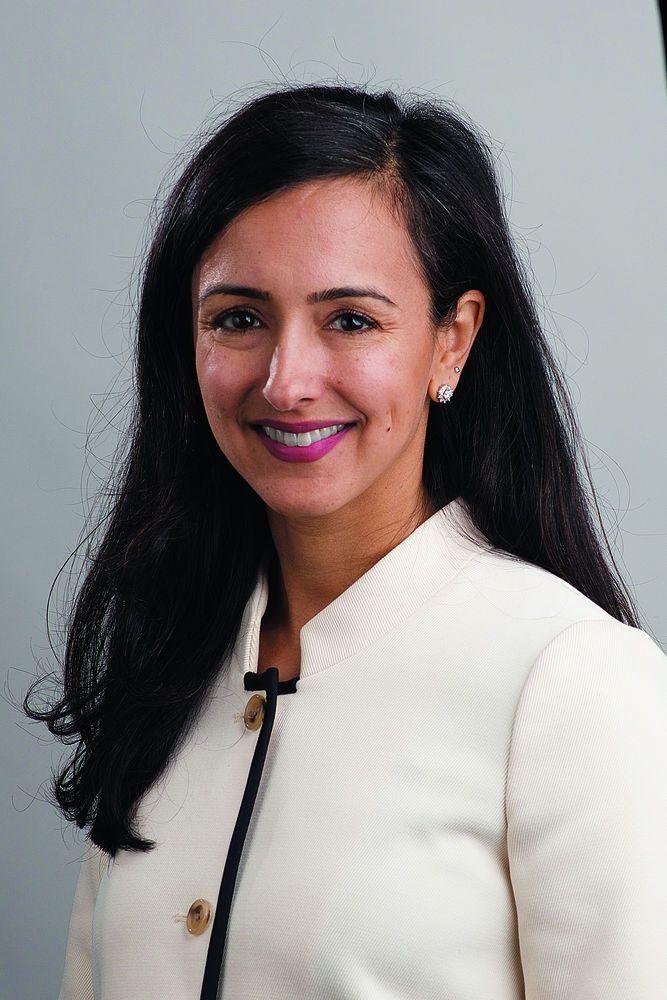
While Pai Panandiker quickly realized that life as a strategy consultant (her first job after graduate school) was not for her, in that role, she received her initial exposure to the pharma industry and knew she had found a calling. “The science, the complexities of our markets, and the ultimate benefit we stand for-helping patients-all inspired me,” says Pai Panandiker, recalling her experience. “I knew then that this was a passion I wanted to pursue.”
From there, Pai Panandiker landed at Pfizer Pharmaceuticals, and an accomplished career commenced.
Pai Panandiker is currently the vice president of US marketing for psychiatry portfolio at Lundbeck, a global player in the central nervous system (CNS) space. Based at the company’s North America headquarters in suburban Chicago, her position includes addressing mental illnesses such as depression and schizophrenia. “As a society, despite decades of significant progress, today there is still an unfortunate degree of stigma attached to mental health disorders, leaving millions of people suffering in silence.” While chance may have ushered in Pai Panandiker’s pharmaceutical career, it was her own familial experience that has kept her there.
“My aunt committed suicide when my mom was in her early twenties, before I was born, due to [an] untreated mental health [illness],” says Pai Panandiker, a Minnesota native. “Suicide obviously impacts the individual who takes their life, but it also impacts the people around them because you always wonder, ‘what could I have done more, what didn’t I see, what signs and symptoms didn’t I recognize.’ So that sort of overarching experience in my mom’s life also had some impact on my sister and me.”
The impact of that experience on her mother amplified Pai Panandiker’s awareness of mental illnesses and the importance of recognizing and treating them. “I think that’s very much carried into my professional life, it’s what has prompted me to be in the industry and be aligned strongly with a company like Lundbeck that is highly focused on CNS disorders.”
Pai Panandiker leads marketing efforts for Lundbeck’s antidepressant Trintellix, which has treated over 400,000 patients to date; for Abilify Maintena, a monthly injectable formulation of the blockbuster Abilify for the treatment of schizophrenia; and for Rexulti, an oral medicine for depression and schizophrenia. Rexulti recently surpassed the milestone of treating 55,000 people. To raise awareness for those suffering from depression, Pai Panandiker directed the company’s first-ever direct-to-consumer TV campaign for Trintellix, a program developed using extensive patient research. Outside of the office, Pai Panandiker is an avid participant in events for local advocacy organizations such as the American Foundation for Suicide Prevention and the National Alliance on Mental Illness (NAMI).
Headquartered in Copenhagen, Denmark, Lundbeck just celebrated the company’s 100th anniversary and has enjoyed vast growth since establishing a US presence in 2009. The organization’s largest shareholder, the Lundbeck Foundation, allows the drugmaker to concentrate its efforts on studying the brain while contributing resources annually to scientific research. Pai Panandiker says this larger commitment is a key reason she chose Lundbeck.
Pai Panandiker points to technical expertise in business management as having contributed to her career success, noting leadership, accountability and authenticity as chief attributes to her career progression. But among her biggest professional goals is seeing those she works with excel. “My belief is that people are the most important asset of any organization. If people succeed, the organization succeeds, and in our case, that means not only do we achieve our business goals, but most importantly, patients in need receive help,” says Pai Panandiker.
While her passion for her work in mental health has not changed, Pai Panandiker believes that the CNS space is changing. “One of the things that we’re seeing in the industry is a lot of companies have exited therapeutic spaces that have risk associated with it,” she says. “That can cause a drought for new medicines patients desperately need.”
As for the pharmaceutical industry as a whole, Pai Panandiker believes that change is coming as well in the form of a movement toward personalized medicine. “Everyone has always known that one person’s fingerprint is not the same as another, particularly within CNS,” she notes. “There’s a huge potential to increase the effectiveness of treatments.”
Pai Panandiker doesn’t have a specific career destination for the future, but hopes to continue challenging herself while advancing the cause of people living with psychiatric and neurological disorders. “Gaining those different combinations of experiences makes me feel like I’m sewing the quintessential quilt that you put on your bed, that you’re able to patch different experiences together and get this great fabric of a career.”
- Jonathan Cotto
Daring Can Be Scary
Sachin Kamal-Bahl, Vice President and Head, Innovation Center, Global Health and Value, Pfizer Inc.
Pricing is the reputational frontier for big pharma today, so it’s no surprise that those who represent the function- internally and externally-are feeling a bit exposed. But Pfizer’s Sachin Kamal-Bahl has a particular character trait that helps deflect those downside critiques: he always leads from the front. The 43-year-old pharmacist, originally from India, follows a career edict founded on
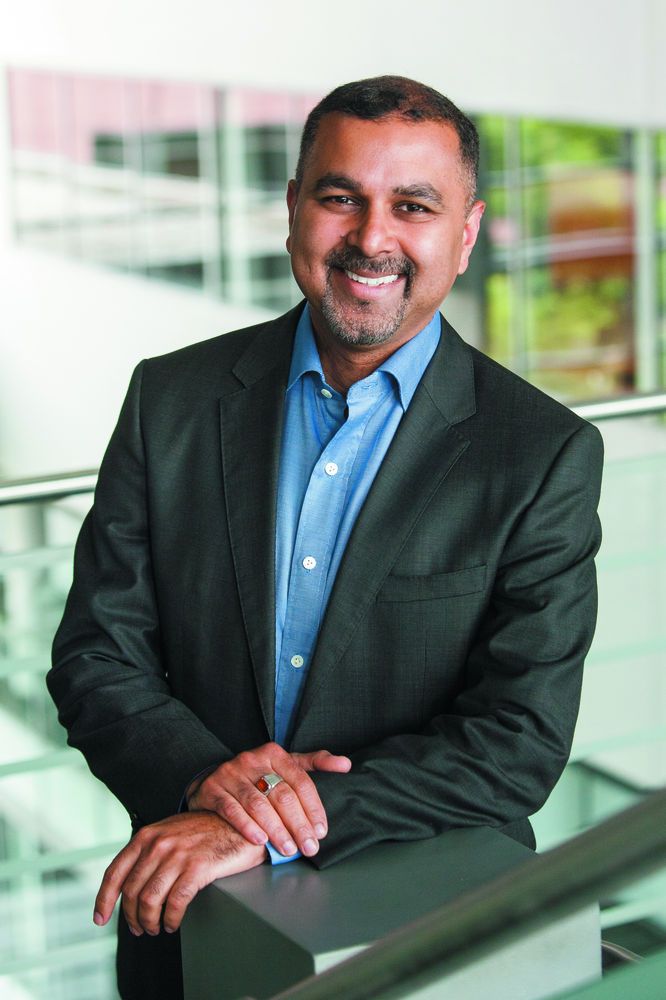
just three short words: “Dare to Try,” a phrase derived from an internal Pfizer-wide initiative to encourage new ideas and taking thoughtful risks through innovative experimentation.
The fact is Kamal-Bahl looks at his career as a license to experiment. It began with an early decision to leave India to come to the US to broaden his academic exposure to the interdisciplinary aspects of health services provision-that politically tricky place where reform meets reality. The career path that followed put Kamal-Bahl at the epicenter of a then-emerging function in pharma called “market access,” leading up to today, where he manages the first internal company think tank that develops and integrates innovative approaches based on well-considered risks and strong technical content to address specific access, pricing and valuation challenges and opportunities facing the industry today.
The Pfizer Global Health and Value Innovation Center develops different approaches and prototypes and embeds them in internal processes to better position the company to demonstrate value and obtain market access for assets at launch. The Center also has a mandate to devise and test novel P&R models that improve patient access to drug innovations while moving the needle beyond the traditional approaches to drug pricing and financing. “Pfizer’s Executive Leadership Team (ELT) authorized the Center with its own budget, separate from operating unit P&L. It gives us greater leeway to take on new ideas and embed them in a project pilot or prototype; if it works, management will invest and the full business units can take it mainstream,” Kamal Bahl told Pharm Exec.
Some managers might be uncomfortable in that role because the Center’s work could be interpreted as an implicit challenge to standard practice. But for Kamal-Bahl there was no second-guessing. “When Pfizer contacted me about helping launch the Center, my instant reaction was I’ve got to give this a try.”
The Center’s status as an incubator of ideas suits Kamal-Bahl’s own background, which began along the traditional credentialing path with a pharmacy degree in Mumbai. A desire to branch out into something more strategic led him to the US and a PhD program in pharmaceutical economics and health services research at the University of Maryland in Baltimore. His research there attracted the attention of industry and in 2003 he joined the Merck & Co. outcomes research and management group, which in 2006 placed him on the Januvia diabetes launch team. “Involvement with this top-selling global brand gave me a front-row seat in the creation of a formal market access function at Merck -and I became a member of Merck’s first Global Access Team.” Later, Merck invited him to assume the role of strategy lead for global health technology assessment (HTA). At the same time, Kamal-Bahl continued to hold adjunct appointments at two leading academic institutions, the University of Pennsylvania’s Leonard Davis Institute of Health Economics and the University of Maryland’s pharmacy school.
After more than a decade at Merck, Kamal-Bahl joined Pfizer in 2014 to launch and lead the Global Health and Value Innovation Center, largely because of his interest in creating the first industry think tank specializing in this growth area. “I was excited about being involved in creating something from scratch, especially as it married the freedom of inquiry of my work in academia to the discipline of business strategy and execution.” It also appealed that ELT members like Global Innovative Health group President Geno Germano were early sponsors of the Center, which continues today under Germano’s successor, Albert Bourla.
Kamal-Bahl cites a number of accomplishments in establishing the Center’s bona fides, on both the internal and external front. A personal point of pride is expanding Pfizer’s engagement with relevant stakeholders, in a much more systematic manner. “We are reaching out to talk to payers, providers and especially patients to solve for access and pricing issues,” he says. This, in turn, has led to the creation of internal process efficiencies that make it easier for the company to demonstrate value for products at and prior to launch, and later in the post-marketing phase.
For example, the Center helped Pfizer participate in the first-ever early-stage parallel advice project with the EU’s European Medicines Agency (EMA) and five national HTA bodies for a rare disease product under development for Duchenne muscular dystrophy. Kamal-Bahl tells Pharm Exec that based on the experience with this pilot, the Center was able to obtain support from the ELT to embed consideration of the EU parallel advice pathway in all relevant Pfizer compounds under development. “It’s an important step. The process forces internal teams to focus on speed-to-market strategies that reduce development costs and advance patient access. It also guarantees the entire Pfizer organization is aligned behind pricing, access and the product’s overall value proposition. That’s because decisions to opt in or out of EU parallel advice must be taken cross-functionally, so everyone is involved.”
Looking forward, Kamal-Bahl predicts that his work at the Center will be critical in positioning Pfizer to identify innovative pricing and financing solutions for new drugs, including those for curative treatments like gene therapies, in order to address payer concerns about their pricing and budget impact. “The next wave of products from our accumulating knowledge of genetics will likely center on cures rather than treatments. Yet, today, the financing burden for drugs is entirely centered at the point of transaction-if a new gene therapy costs $1 million, then under the current system we would expect a full payment up front, subject only to a few performance contingencies; there is no way to amortize the full cost across a potential lifetime of benefit.”
Drugmakers should be thinking hard on “out-of-the-box” strategies on alternatives to the current way medicines are priced and paid for, Kamal-Bahl contends. Ideas from the industry are coming from far afield, including new cooperative lending facilities with the capital to finance pricing of expensive medicines over time. “No idea is too fanciful when you recognize the cost of new drugs is a policy issue that we must lead in solving. The alternative is government regulation of drug prices that will end up with the perverse effect of eliminating the market for innovation, not preserving it.”
To navigate through such turbulent waters, Kamal-Bahl highlights three skills that future biopharma leaders and their teams require to succeed.
First is to ensure your people are allowed to be creative, to incorporate ideas that are unconventional, and to take prudent risks -while acknowledging too, that some of these ideas will fail.
Second, your team should be a “safe haven” for members to stray from the path of the safe and narrow. If they can do that, many more useful ideas are likely to surface for debate.
Third is to be open to the world outside pharma. “Interesting ideas will come when we look and listen beyond traditional pharma,” says Kamal-Bahl. “There is a lot of promise in the space where the health and technology worlds intersect; we are already seeing disruptive innovations emerging in this area.”
Where does Kamal-Bahl see himself in 10 years? “Regardless of the setting, I see myself continuing on my ‘dare-to-try’ journey to generate innovative and influential ideas on drug pricing, value and access. With the explosive growth in specialty drugs and the coming tsunami of precision medicine and gene-based therapy, the stakes for accelerating the pipeline of approaches to address them have never been higher.”
- William Looney
A Restless Mover
Christopher Dillard, Senior Director, Marketing, XenoPort
Like many ballets, the early steps in one’s career can follow a certain melody, but by the second act, the musical theme may shift entirely. By the finale, the audience may be able to see the arc, but in the midst of it, it can be hard to see the artist’s design. For XenoPort’s Chris Dillard, the path from the contemporary ballet dancer to senior director of marketing makes sense, but
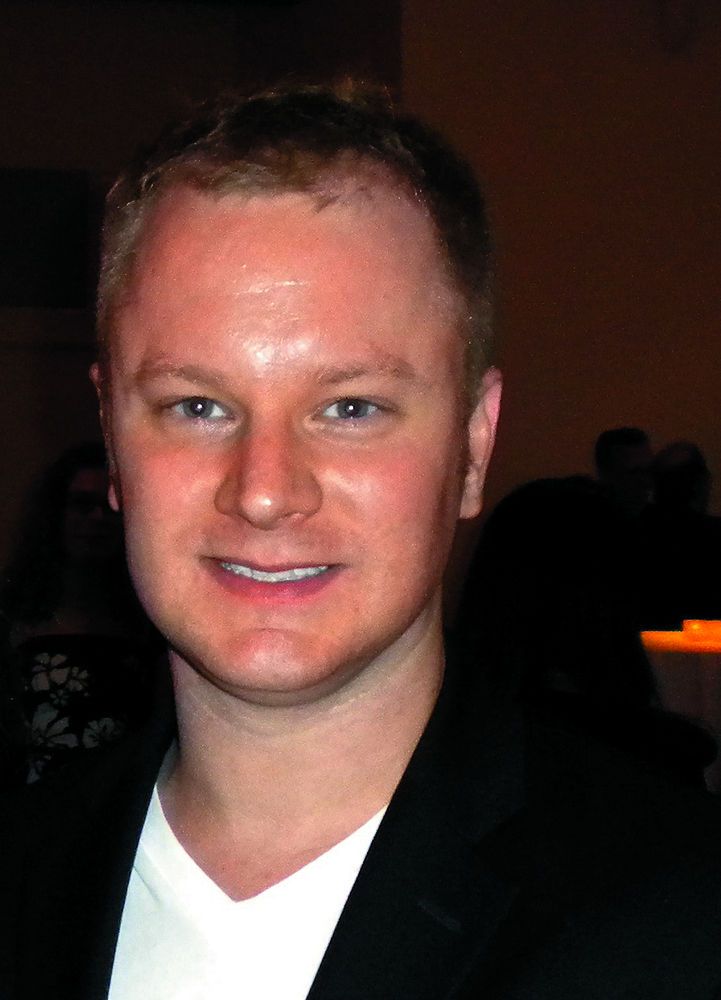
only when viewed with some perspective.
After brief stints with such companies as the Dance Theatre of Harlem and the Stuttgart Ballet of Germany, Dillard decided to stay adjacent to the arts, utilizing his degree in arts administration. His first big step out of the arts track took him to a major ad firm, Draft Worldwide (now FCB Global), where he worked on a Verizon Fios account. Dillard followed this with successive stops at other advertising firms, where his work had him sticking a toe in tech at LG Mobile, and then Hollywood, working on marketing material for the first of the Iron Man series.
While still on the agency side for his first foray into pharma, Dillard worked on Shire’s ADHD treatment Daytrana. “I had complete hesitation stepping into pharma advertising,” he says. Dillard’s primary concerns were around constraints on creativity, but found rather quickly that working within these limitations, one gains skills and expertise, and “you become invaluable” to an agency hoping to court pharma dollars. He added that in the consumer world, “accounts are lost left and right, but once you move into pharma, things are much more steady.”
During his time on the agency side, Dillard worked on web, social media, and mobile app development for Novartis’ Xolair and the TOBI Podhaler and then digital development and strategy for Teva’s pain franchise, Fentora and Amrix. By this time, Dillard was working for the digitally-oriented marketing firm Heartbeat Ideas, where he began his efforts that would ultimately bring him to pharma on the momentum of an award-winning campaign.
“We were able to put together a really interesting, creative platform to get patients interested, get them to the website,” says Dillard. The “End the Bedtime Battle” integrated campaign on restless legs syndrome won a silver CLIO Award, with recognition in two digital categories, Best Pharmaceutical Website and Banners & Rich Media Advertising.
And given his career’s evolution from dancing, there is a sense of irony or perhaps symmetry, that Dillard’s first role on the client side came when XenoPort offered to bring him over in 2014 from the advertising firm to work directly on Horizant, the treatment for moderate-to-severe restless legs syndrome. His ascent within the ranks of XenoPort to senior director of marketing was rapid, and he now reports directly to the CEO.
“It’s been really big for me, working on a campaign that brings legitimacy to this disorder. People hear restless legs syndrome, it’s sort of a strange sounding disease. To many, it sounds like a joke,” he explains. “Much of the focus has been around empowering the patient and expanding knowledge of the disease.”
“You can’t overestimate the value of a good night’s rest, and for many of these patients, the uncontrollable urge to move is akin to a kid in a car seat,” adds Dillard. But for these patients, there’s a huge problem translating their symptoms to their physician, and knowledge in the medical community is limited-hence, a significant rate of misdiagnosis where many of these patients simply receive sleeping pills that don’t help.
As Dillard works to get the word out, Horizant has hit stride. XenoPort achieved rapid year-over-year growth and has ambitious projections for the future. The value was clear to Arbor Pharmaceuticals, which announced the acquisition of XenoPort in May. “It’s my first acquisition in the industry, so it will be interesting to see how another company functions,” says Dillard. But a fourfold increase to Horizant’s sale force should follow with continued growth.
To XenoPort and now Arbor, Dillard says he brings a varied background, and that of a true marketer. Like his migration from arts to industry, the meandering course of his career seems rather contradictory-leaping from the free forms of the musical and movement arts to one constrained by rigid rules and regulations. But it’s in this confined and regulated space where he strives to always present fresh new ideas. He adds, “It’s actually quite amazing to see the creativity that can come while still playing within the rules.”
- Casey McDonald
Click here for Emerging Pharma Leaders - Lessons from the Front Bench
